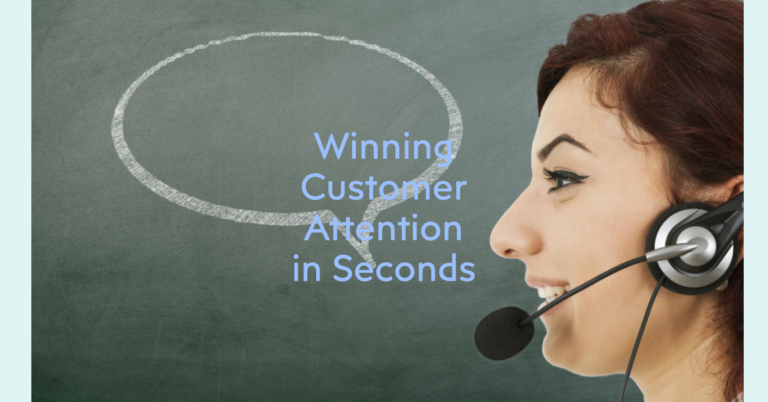Digital marketing has become an indispensable tool for businesses in today’s rapidly evolving digital landscape. To effectively reach and engage their target audience, marketers need to understand and apply the fundamental principles that drive success in the digital realm. One such framework that provides a solid foundation is the 7 Cs of digital marketing. In this comprehensive guide, we will delve into each of these Cs and explore how they can be leveraged to create impactful digital marketing campaigns.
1. Content: The Heart of Digital Marketing
Compelling content lies at the heart of any successful digital marketing strategy. It is the fuel that drives engagement and establishes credibility for your brand. Whether it’s blog posts, videos, social media updates, or email newsletters, high-quality content is essential. Marketers must focus on creating valuable, relevant, and shareable content that resonates with their target audience. By providing informative and educational content that answers their questions and solves their problems, you can establish your brand as a trusted authority in your industry.
Providing Value through Content
To unlock online success, it’s crucial to provide value through your content. This can be achieved by:
- Identifying your target audience and understanding their pain points and needs.
- Conducting thorough research to gather insights and data to support your content.
- Creating content that is informative, actionable, and easy to consume.
- Incorporating visual elements like images, infographics, and videos to enhance the user experience.
- Consistently publishing fresh and relevant content to keep your audience engaged and coming back for more.
- Promoting your content through various channels, including social media, email marketing, and SEO optimization.
Remember, content is not just limited to written articles. It can take various forms, such as podcasts, webinars, and case studies. By diversifying your content formats, you can cater to different learning styles and preferences, ultimately reaching a wider audience.
2. Context: Understanding Your Audience
Understanding the context in which your audience interacts with your brand is crucial. To create effective digital marketing campaigns, you need to tailor your efforts to specific demographics, geographic locations, cultural nuances, and device preferences. By understanding the context in which your audience operates, you can deliver personalized and relevant experiences that resonate with them.
Personalization and Localization
Personalization and localization are key aspects of delivering a relevant and impactful digital experience. By collecting and analyzing data about your audience, such as their browsing behavior, purchase history, and preferences, you can create personalized marketing campaigns that speak directly to their needs and interests. Localization, on the other hand, involves adapting your content and messaging to suit different regions and cultures. This may include translating your content into different languages, incorporating local references, and considering cultural sensitivities.
By leveraging personalization and localization, you can create a tailored experience that makes your audience feel understood and valued. This, in turn, increases engagement and drives conversions.
3. Channels: Choosing the Right Platforms
The digital landscape offers a plethora of channels to engage with your audience. From social media platforms to search engines, email marketing to mobile applications, marketers must identify the channels that align with their target audience’s preferences. By understanding where your audience spends their time online, you can optimize your reach and connect with potential customers effectively.
Identifying Your Target Channels
When choosing the right channels for your digital marketing campaigns, consider the following:
- Conduct market research to identify the platforms where your target audience is most active.
- Analyze your competitors’ presence on different channels to gain insights into their strategies.
- Consider the nature of your product or service and the type of content that best showcases its value.
- Evaluate the strengths and limitations of each channel in terms of reach, targeting capabilities, and engagement potential.
Remember that not all channels will be equally effective for your business. It’s important to focus your efforts on the platforms that are most likely to yield results and align with your marketing objectives.
4. Community: Building Brand Advocacy
Building a strong online community around your brand is essential for long-term success. Engaging with your audience, fostering conversations, and creating a sense of belonging cultivates brand loyalty and advocacy. Social media groups, online forums, and interactive content platforms are powerful tools for nurturing and expanding your community.
Engaging with Your Audience
To build a thriving online community, consider the following strategies:
- Respond promptly to comments, messages, and inquiries from your audience.
- Encourage user-generated content, such as reviews, testimonials, and user stories.
- Host live events, webinars, or Q&A sessions to interact directly with your audience.
- Share behind-the-scenes content to give your audience a glimpse into your brand’s personality.
- Collaborate with influencers and thought leaders in your industry to expand your reach.
- Implement referral programs or loyalty programs to incentivize and reward customer advocacy.
By actively engaging with your audience, you can foster a sense of connection and build a community of loyal brand advocates who will champion your products or services.
5. Conversion: Turning Visitors into Customers
Converting website visitors into leads or customers is the ultimate goal of digital marketing. Optimizing conversion funnels, utilizing persuasive call-to-actions, and implementing effective landing pages are critical to driving conversions. Continually testing and refining your conversion strategies can significantly improve your marketing ROI.
Optimizing Conversion Funnel
To optimize your conversion funnel, consider the following steps:
- Streamline the user journey from the initial touchpoint to the final conversion.
- Remove any unnecessary steps or barriers that may hinder the conversion process.
- Implement clear and compelling call-to-actions that guide users towards the desired action.
- Use persuasive copywriting and design elements to create a sense of urgency or exclusivity.
- Test different variations of your landing pages, forms, and CTAs to identify the most effective elements.
- Analyze user behavior and collect data to gain insights into conversion bottlenecks and areas for improvement.
By continuously optimizing your conversion funnel, you can increase your conversion rate and maximize the value of your digital marketing efforts.
6. Commerce: Driving Revenue through E-commerce
In the digital age, e-commerce plays a pivotal role in driving revenue. Providing a seamless and secure online shopping experience is essential for converting leads into paying customers. Incorporating e-commerce platforms, a secure payment gateways, and user-friendly interfaces are essential components of successful digital commerce.
Creating an Effective E-commerce Experience
To drive revenue through e-commerce, consider the following strategies:
- Choose an e-commerce platform that suits your business needs and offers robust features.
- Optimize your product listings with persuasive descriptions, high-quality images, and customer reviews.
- Implement secure payment gateways to instill trust and confidence in your customers.
- Simplify the checkout process by minimizing the number of steps and forms required.
- Offer personalized recommendations and cross-selling opportunities to increase average order value.
- Provide excellent customer support and hassle-free returns to enhance the overall shopping experience.
By focusing on creating an exceptional e-commerce experience, you can increase customer satisfaction and drive repeat purchases.
7. Analytics: Leveraging Data for Success
Data is the lifeblood of digital marketing. By leveraging analytics tools, marketers can gain valuable insights into user behavior, campaign performance, and overall marketing effectiveness. Analyzing key metrics and making data-driven decisions enables marketers to optimize their strategies, identify areas for improvement, and achieve better results over time.
Harnessing the Power of Data
To harness the power of data for success, consider the following practices:
- Set clear goals and key performance indicators (KPIs) to measure the success of your digital marketing campaigns.
- Implement tracking mechanisms to collect data across various touchpoints and channels.
- Use analytics tools to analyze data and generate actionable insights.
- Monitor key metrics such as website traffic, conversion rates, bounce rates, and customer acquisition costs.
- Conduct A/B testing to compare different variations of your campaigns and optimize performance.
- Regularly review and refine your digital marketing strategies based on data-driven insights.
By continuously monitoring and analyzing data, you can make informed decisions and drive continuous improvement in your digital marketing efforts.
Conclusion
Mastering the 7 Cs of digital marketing provides a framework for building successful and impactful campaigns in the digital realm. By focusing on content, context, channels, community, conversion, commerce, and analytics, marketers can align their efforts with the needs and preferences of their target audience. Embracing these principles and continuously adapting to the evolving digital landscape will empower businesses to thrive in the competitive online market.
Remember, the world of digital marketing is dynamic and ever-evolving. Stay curious, stay updated, and adapt to the latest trends to remain at the forefront of the industry. Unlocking online success requires dedication, strategic thinking, and a customer-centric approach. By mastering the 7 Cs, you can unlock the keys to a thriving digital marketing career and drive meaningful results for your business.





